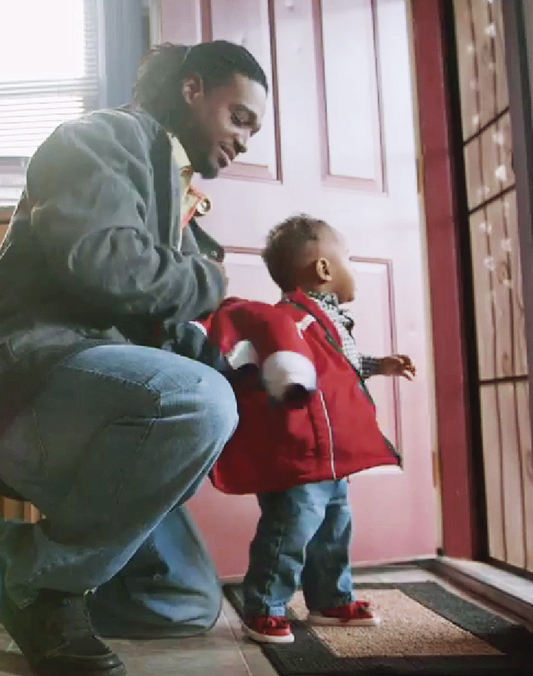By NANCY FRAZIER O'BRIEN
When Anteus Parker broke his leg last year after slipping on a puddle, he had no health insurance and was the sole caretaker of his son Ray, then only 10 weeks old. He received emergency surgery but little follow-up care because he had no primary care physician and no one to look after Ray.
"I was scared half to death at what I was facing," he said. "I was wondering if the leg was healing properly (and) when I would get the screws out, but I had no one to ask."
A referral from Project Access Northwest led Parker, 29, to the Swedish Community Specialty Clinic in Seattle, which is affiliated with Providence Health & Services. The residents in orthopedics at the clinic discovered that Parker's leg was rejecting the pins that were holding the bones in place and "it was time for the pins to come out," he said.
But the second surgery didn't mean the end of Parker's care. "The clinic was with me every step of the way," he said. The specialty clinic partners with more than 300 orthopedists, general surgeons, cardiologists, neurologists, dentists and other specialists who volunteer to treat one to four new patients each month. The model is the subject of an Innovation Forum at the 2014 Catholic Health Assembly, June 22-24 in Chicago.

Anteus Parker puts on his son Ray's coat. The single father benefitted from the services of the Swedish Community Specialty Clinic in Seattle after he broke his leg last year.
Parker, having finished with physical therapy and back to full range of motion, said he feels "like I never broke my leg. My quality of life is exceptionally high."
Little Ray, now 1, found some new friends too. "My son doesn't really take to everyone, but he loved the people" at the clinic, Parker said. "When my appointments were over, he would not want to leave."
Safety net
Swedish Health Services established the Community Specialty Clinic in 2010 to provide advanced medical care for underserved and uninsured members of the community. Dental services were added in 2011 to offer extractions of badly decayed teeth. In 2012, 88 percent of the clinic's 1,254 medical visits were treated free of charge, as were all 380 dental patients.
"Community health clinics and primary care doctors had no place to refer specialty patients," said Tom Gibbon, clinic manager and assembly session copresenter. "If they were treating a patient who needed a hernia operation or a hip replacement, for example, primary care physicians would have to beg, borrow and steal from colleagues" to get what that patient needed.
"It took a great deal of time, and there was no continuity," Gibbon added.
Project Access Northwest, which covers King, Kitsap and Snohomish Counties in Washington state, started up around the same time as the Swedish clinic and provides case management services to screen and qualify new patients.
Volunteer physicians don't have to worry about the paperwork involved in care of clinic patients. Clinic personnel and Project Access staff members provide follow-up case management and social support services for the patients.
"The doctors do what they're trained to do and love to do," Gibbon said.
Commended by ER doctors
Gibbon recently got that word firsthand when he hurt his wrist and had to visit the Swedish emergency department. "All the doctors were coming up to me and telling me how much they love this program," which reduces unnecessary use of emergency rooms and improves patient outcomes, he said.
The Swedish clinic also operates four residency programs — in general surgery, orthopedics, podiatry and dentistry. More than 4,000 medical patients have been evaluated and treated through the clinic since 2010, and 1,116 new dental patients were treated in 2013 alone.
The clinic provided an estimated $2 million in charity care in 2012, the most recent year for which data is available, but the benefits go even further in reducing patient pain and suffering and unreimbursed emergency department costs because patients get care earlier and in a more appropriate venue.
"Some patients who would have ended up in the ED now know where to go" to get timely, appropriate health care, he said.
Dividing the workload
He recalled one woman who had "been through the system 11 times" due to an unresolved dental problem, receiving antibiotics and painkillers each time until she "started having problems bordering on addiction because of the painkillers."
The woman was referred to the dental clinic at Swedish and had one tooth extracted, Gibbon said. "That solved all of this repetition of going to the ER and the primary care physician over and over," he said. "The high utilization was reduced, and the addiction cycle that was starting was ended."
Oral surgeon Dr. Amy Winston, one of the founding members of the Swedish Community Specialty Clinic and dental director at Swedish Hospital, said the beauty of the Swedish clinic model is that no one physician or dentist has to commit too much volunteer time to the work because it is divided among so many people.
She also praised Swedish for treating the whole patient and not trying to compartmentalize its health services into a narrow niche.
"Swedish has a bigger mindset and doesn't try to shove the problem to someone else," she said.
For Parker, that approach meant not only a fully healed leg but also the flexibility needed by a single father in making appointments, follow-up on his physical therapy and rehab and even a little informal child care from clinic staff during his appointments.
"It's not just what they were offering; it was how they were offering it," said Parker of the Swedish clinic staff. "These are stellar people."
Copyright © 2014 by the Catholic Health Association
of the United States
For reprint permission, contact Betty Crosby
or call (314) 253-3477.